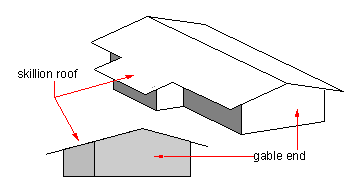|
Fæstningens Materialgård
Fæstningens Materialgård is a former military storage facility at 30 Frederiksholms Kanal in Copenhagen, Denmark. Arranged around a central courtyard, the individual buildings have been built to a homogeneous design, all with yellow-washed facades, green doors and gates, white window frames and red tile roofs, but they have in fact been accumulated over an extended period of time, mainly between 1740 and 1925. They also integrate visually and physically with the adjacent ''Civiletatens Materialgård'', a storage facility associated with the royal palaces, and the Royal Horse Guards Barracks, together forming an area of low, yellow buildings surrounded on three sides by Frederiksholm Canal, Bryghusgade and Vester Voldgade. The International Federation for Housing and Planning was one of the first tenants moving into 30 Frederiksholms Kanal in December 2012. History Frederiksholm Canal was dug in 1681 and a new military storage facility, ''Fæstningens Materialgård'', was esta ... [...More Info...] [...Related Items...] OR: [Wikipedia] [Google] [Baidu] |
Wall Dormer
A dormer is a roofed structure, often containing a window, that projects vertically beyond the plane of a pitched roof. A dormer window (also called ''dormer'') is a form of roof window. Dormers are commonly used to increase the usable space in a loft and to create window openings in a roof plane. A dormer is often one of the primary elements of a loft conversion. As a prominent element of many buildings, different types of dormer have evolved to complement different styles of architecture. When the structure appears on the spires of churches and cathedrals, it is usually referred to as a ''lucarne''. History The word ''dormer'' is derived from the Middle French , meaning "sleeping room", as dormer windows often provided light and space to attic-level bedrooms. One of the earliest uses of dormers was in the form of lucarnes, slender dormers which provided ventilation to the spires of English Gothic churches and cathedrals. An early example are the lucarnes of the spire of ... [...More Info...] [...Related Items...] OR: [Wikipedia] [Google] [Baidu] |
Fortifications Of Copenhagen
The fortifications of Copenhagen is the broad name for the rings of fortifications surrounding the city of Copenhagen. They can be classified historically as follows: * The medieval fortifications dating from the 12th century * The bastioned fortifications dating from the 17th century * The ring fortification system dating from the 19th century Medieval fortifications (12th–15th centuries) The first fortification was the castle built by bishop Absalon in 1167 on Slotsholmen at the foundation of the city. This stood for 200 years until it was destroyed by the Hanse in 1369. It was replaced in 1417 by the Copenhagen Castle built by the then bishop, but taken over by the king, Eric of Pomerania. The ruins of both these castles are visible to the public view under the Christiansborg Palace. Bastioned Fortifications (17th century) The city was extensively fortified by Christian IV in the mid 17th century. To the west the city was protected by a series of ramparts and bastions ... [...More Info...] [...Related Items...] OR: [Wikipedia] [Google] [Baidu] |
Realdania
Realdania is a private association in Denmark which supports projects in architecture and planning. It was established in 2000 following the sale of Realkredit Danmark to Danske Bank, when a fund of approximately 20 billion kroner (EUR 2.7 billion) was put aside for "philanthropic" purposes. Realkredit Danmark was owned and controlled by its members (mortgage lenders), and this set-up was kept in Realdania. Structure Realdania is often erroneously called a private charitable foundation, but Realdania's legal structure is that of an association operating as a business and not a foundation. Only owners of real estate in Denmark can become members of Realdania and participate in electing members of the board. Realdania has several subsidiaries. Realdania's closed structure has provoked criticism, and the association's funds has been called "stray billions" since they are controlled by a small network of people. Stated purposes Its activity is concentrated on supporting projects in ... [...More Info...] [...Related Items...] OR: [Wikipedia] [Google] [Baidu] |
Skillion Roof
A shed roof, also known variously as a pent roof, lean-to roof, outshot, catslide, skillion roof (in Australia and New Zealand), and, rarely, a mono-pitched roof,Cowan, Henry J., and Peter R. Smith. ''Dictionary of Architectural and Building Technology''. 4th ed. London: Spon Press, 2004. Print. is a single-pitched roof surface. This is in contrast to a dual- or multiple-pitched roof. Applications A single-pitched roof can be a smaller addition to an existing roof, known in some areas as a lean-to roof, and a "outshot", "catslide", or skillion roof in others. Some Saltbox homes were expanded by the addition of such a roof, often at a shallower pitch than the original roof. Single-pitched roofs are used beneath clerestory windows. One or more single-pitched roofs can be used for aesthetic consideration(s). A form of single-pitched roof with multiple roof surfaces is the sawtooth roof. See also * List of roof shapes Roof shapes encompass a broad range of designs, ... [...More Info...] [...Related Items...] OR: [Wikipedia] [Google] [Baidu] |
Overhang (architecture)
In architecture, an overhang is a protruding structure that may provide protection for lower levels. Overhangs on two sides of Pennsylvania Dutch barns protect doors, windows, and other lower-level structures. Overhangs on all four sides of barns and larger, older farmhouses are common in Swiss architecture. An overhanging eave is the edge of a roof, protruding outwards from the side of the building, generally to provide weather protection. History Overhangs are also common in medieval Indian architecture—especially Mughal architecture of the 16th–18th century, where they are called '' chhajja'', often supported by ornate corbels and also seen in Hindu temple architecture. Later, these were adopted by Indo-Saracenic architecture, which flourished during the British Raj. Extensive overhangs were incorporated in early Buddhist architecture; were seen in early Buddhist temples; and later became part of Tibetan architecture, Chinese architecture, and eventually, traditional Ja ... [...More Info...] [...Related Items...] OR: [Wikipedia] [Google] [Baidu] |
Calcium Hydroxide
Calcium hydroxide (traditionally called slaked lime) is an inorganic compound with the chemical formula Ca( OH)2. It is a colorless crystal or white powder and is produced when quicklime ( calcium oxide) is mixed with water. Annually, approximately 125 million tons of calcium hydroxide are produced worldwide. Calcium hydroxide has many names including hydrated lime, caustic lime, builders' lime, slaked lime, cal, and pickling lime. Calcium hydroxide is used in many applications, including food preparation, where it has been identified as E number E526. Limewater, also called milk of lime, is the common name for a saturated solution of calcium hydroxide. Solubility Calcium hydroxide is moderately soluble in water, as seen for many dihydroxides. Its solubility increases from 0.66 g/L at 100 °C to 1.89 g/L at 0 °C. Its solubility product ''K''sp of 5.02 at 25 °C, its dissociation in water is large enough that its solutions are basic according to the following ... [...More Info...] [...Related Items...] OR: [Wikipedia] [Google] [Baidu] |
Hoist (device)
A hoist is a device used for lifting or lowering a load by means of a drum or lift-wheel around which rope or chain wraps. It may be manually operated, electrically or pneumatically driven and may use chain, fiber or wire rope as its lifting medium. The most familiar form is an elevator, the car of which is raised and lowered by a hoist mechanism. Most hoists couple to their loads using a lifting hook. Today, there are a few governing bodies for the North American overhead hoist industry which include the Hoist Manufactures Institute, ASME, and the Occupational Safety and Health Administration. HMI is a product counsel of the Material Handling Industry of America consisting of hoist manufacturers promoting safe use of their products. Types The word "hoist" is used to describe many different types of equipment that lift and lower loads. For example, many people use “hoist” to describe an elevator. The information contained here pertains specially to overhead, con ... [...More Info...] [...Related Items...] OR: [Wikipedia] [Google] [Baidu] |
Timber Framing
Timber framing () and "post-and-beam" construction are traditional methods of building with heavy Beam (structure), timbers, creating structures using squared-off and carefully fitted and Woodworking joints, joined timbers with joints secured by large wooden pegs. If the Structural system, structural frame of Load-bearing wall, load-bearing timber is left exposed on the exterior of the building it may be referred to as half-timbered, and in many cases the infill between timbers will be used for decorative effect. The country most known for this kind of architecture is Germany, where timber-framed houses are spread all over the country. The method comes from working directly from logs and trees rather than pre-cut Lumber#Dimensional lumber, dimensional lumber. Artisans or framers would gradually assemble a building by hewing logs or trees with broadaxes, adzes, and draw knife, draw knives and by using woodworking tools, such as hand-powered Brace (tool), braces and Auger (dril ... [...More Info...] [...Related Items...] OR: [Wikipedia] [Google] [Baidu] |
Neoclassical Architecture
Neoclassical architecture, sometimes referred to as Classical Revival architecture, is an architectural style produced by the Neoclassicism, Neoclassical movement that began in the mid-18th century in Italy, France and Germany. It became one of the most prominent architectural styles in the Western world. The prevailing styles of architecture in most of Europe for the previous two centuries, Renaissance architecture and Baroque architecture, already represented partial revivals of the Classical architecture of Roman architecture, ancient Rome and ancient Greek architecture, but the Neoclassical movement aimed to strip away the excesses of Late Baroque and return to a purer, more complete, and more authentic classical style, adapted to modern purposes. The development of archaeology and published accurate records of surviving classical buildings was crucial in the emergence of Neoclassical architecture. In many countries, there was an initial wave essentially drawing on Roman archi ... [...More Info...] [...Related Items...] OR: [Wikipedia] [Google] [Baidu] |






